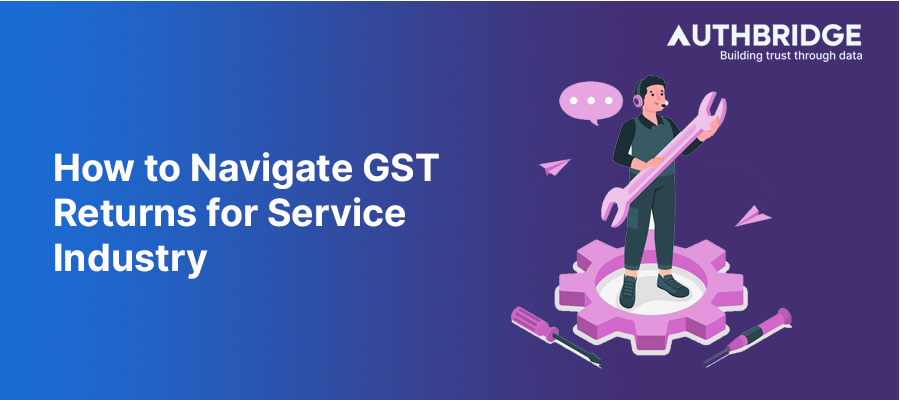The Ultimate Guide To Navigating GST Returns For The Service Industry

1. Understanding GST's Impact on the Service Sector
Overview of GST in the Service Sector
The Goods and Services Tax (GST) has significantly transformed the taxation landscape for the service sector in India. By replacing multiple indirect taxes with a single tax, GST has aimed to make the tax system more transparent, efficient, and business-friendly. The service sector, being a major contributor to the Indian economy, has seen both opportunities and challenges with the GST implementation.
Positive Changes Brought by GST
GST has brought several positive changes for the service sector, including:
- Uniform Tax Rates: With GST, service providers now face a uniform tax rate across India, simplifying the tax structure and making it easier to do business across state borders.
- Ease of Doing Business: The centralized registration process under GST has made it easier for service providers to start and expand their businesses without the need for multiple state-wise registrations.
- Improved Efficiency: The elimination of the cascading effect of taxes has resulted in cost savings for service providers, which can potentially be passed on to consumers.
2. Key Benefits of GST for the Service Industry
Simplification of Tax Structure
GST has unified more than a dozen of the central and state levies into a single tax. This simplification has significantly reduced the complexity of tax compliance for service providers, making it easier to understand and manage their tax liabilities. The uniform tax structure across the country also facilitates smoother interstate service provision.
Input Tax Credit Advantages
One of the most significant benefits under GST for the service sector is the availability of input tax credit (ITC). Service providers can now claim ITC on the GST paid on inputs and input services, which was not fully available under the previous tax regime. This feature has the potential to reduce the overall cost of services, provided the benefits are passed on to the consumers.
Impact on Cost and Pricing
The implementation of GST has had a mixed impact on the cost and pricing of services. While the tax rate on some services has increased, leading to higher costs, the seamless flow of input tax credit has provided an opportunity for businesses to optimize their tax liabilities and potentially reduce the prices of services.
3. Challenges and Solutions under GST for Service Providers
Compliance and Registration Challenges
The transition to GST required service providers to adapt to new compliance and registration processes. For businesses operating in multiple states, obtaining separate registrations posed a challenge. However, the solution lies in leveraging technology to manage compliance efficiently and seeking professional advice to navigate the registration process smoothly.
Managing Increased Tax Rates
Some service sectors experienced an increase in tax rates under GST, which initially led to concerns about higher costs for consumers. Businesses can mitigate this impact by optimizing their input tax credits, thereby reducing the effective tax burden and managing the pricing of their services competitively.
Navigating the Place of Supply Rules
The 'place of supply' rules under GST are crucial for determining the right tax rate and the applicable state for tax collection. Service providers, especially those offering digital or interstate services, must understand these rules to ensure accurate tax invoicing. Adopting GST-compliant software solutions can help in accurately determining the place of supply and managing tax liabilities.
4. Strategic Approaches to GST for Service Businesses
Leveraging Technology for Compliance
Technology plays a pivotal role in simplifying GST compliance for the service industry. Investing in GST-compliant accounting and billing software can automate tax calculations, return filings, and compliance checks, reducing the risk of errors and non-compliance.
Optimizing Input Tax Credit
Service providers should meticulously track and claim input tax credits to minimize their tax outgo. Regular reconciliation of invoices and timely filing of returns are essential practices to maximize ITC benefits and improve cash flows.
Adapting Business Models for GST Efficiency
The GST regime necessitates a re-evaluation of business models, especially for pricing strategies and supply chain management. Service providers should consider GST implications in their pricing decisions and explore opportunities for cost optimization to maintain competitive pricing.
5. Case Studies: GST Success Stories in the Service Sector
While the initial transition to GST posed challenges for the service sector, many businesses have successfully navigated the change, leveraging the benefits of the new tax regime. Case studies from sectors such as IT services, hospitality, and logistics demonstrate how adopting strategic approaches to GST compliance, optimizing input tax credits, and leveraging technology have led to operational efficiencies and cost savings.
Conclusion
The introduction of GST has marked a significant shift for the service industry in India, bringing both challenges and opportunities. By understanding the nuances of GST, leveraging technology for compliance, and optimizing tax credits, service providers can navigate the GST landscape effectively. The journey under GST continues to evolve, and staying informed and adaptable is key to harnessing the benefits of this transformative tax regime.
Category

Abhinandan Banerjee
(Associate Manager - Marketing)
Abhinandan is a dynamic Product and Content Marketer, boasting over seven years of experience in crafting impactful marketing strategies across diverse environments. Known for his strategic insights, he propels digital growth and boosts brand visibility by transforming complex ideas into compelling content that inspires action.



